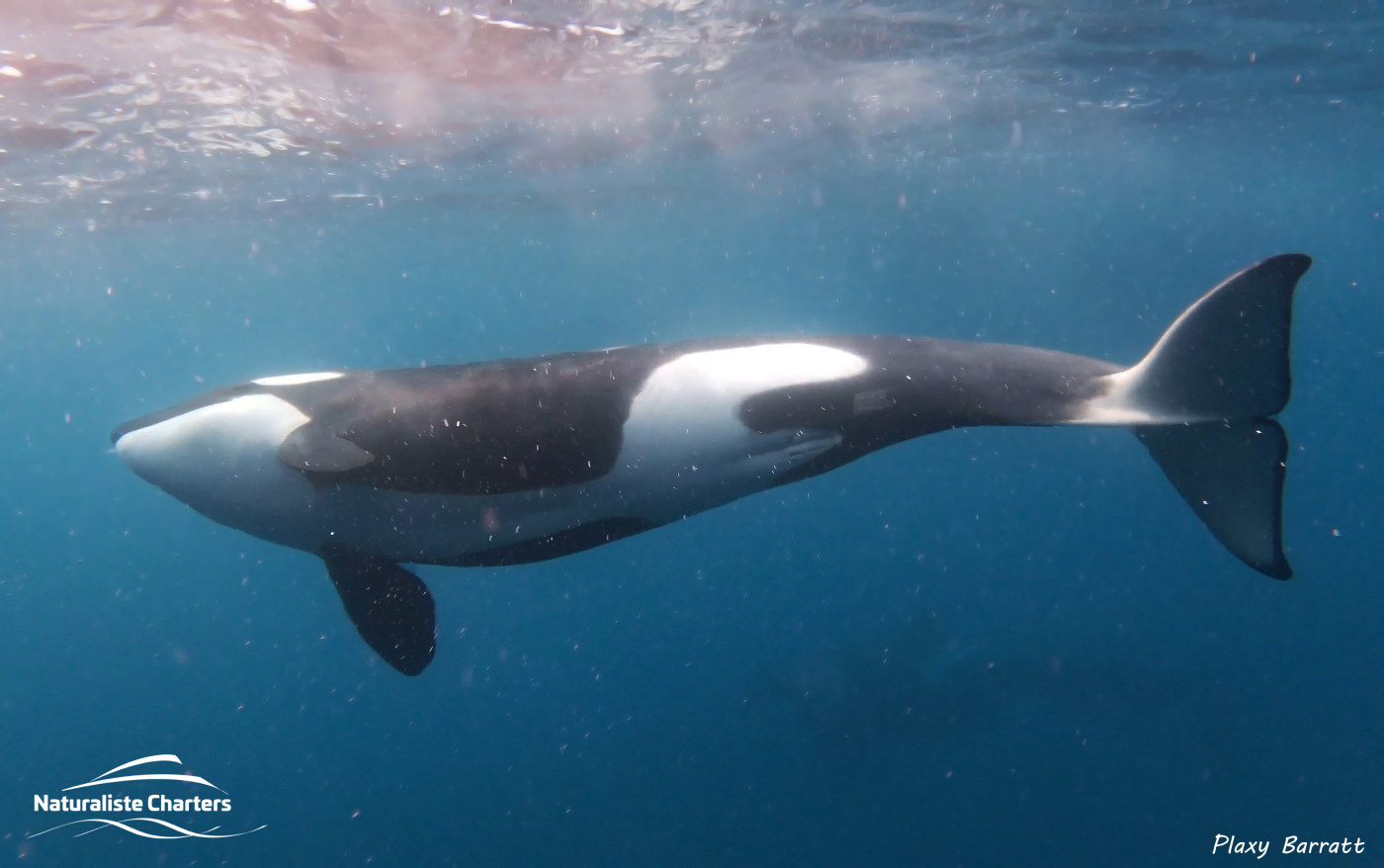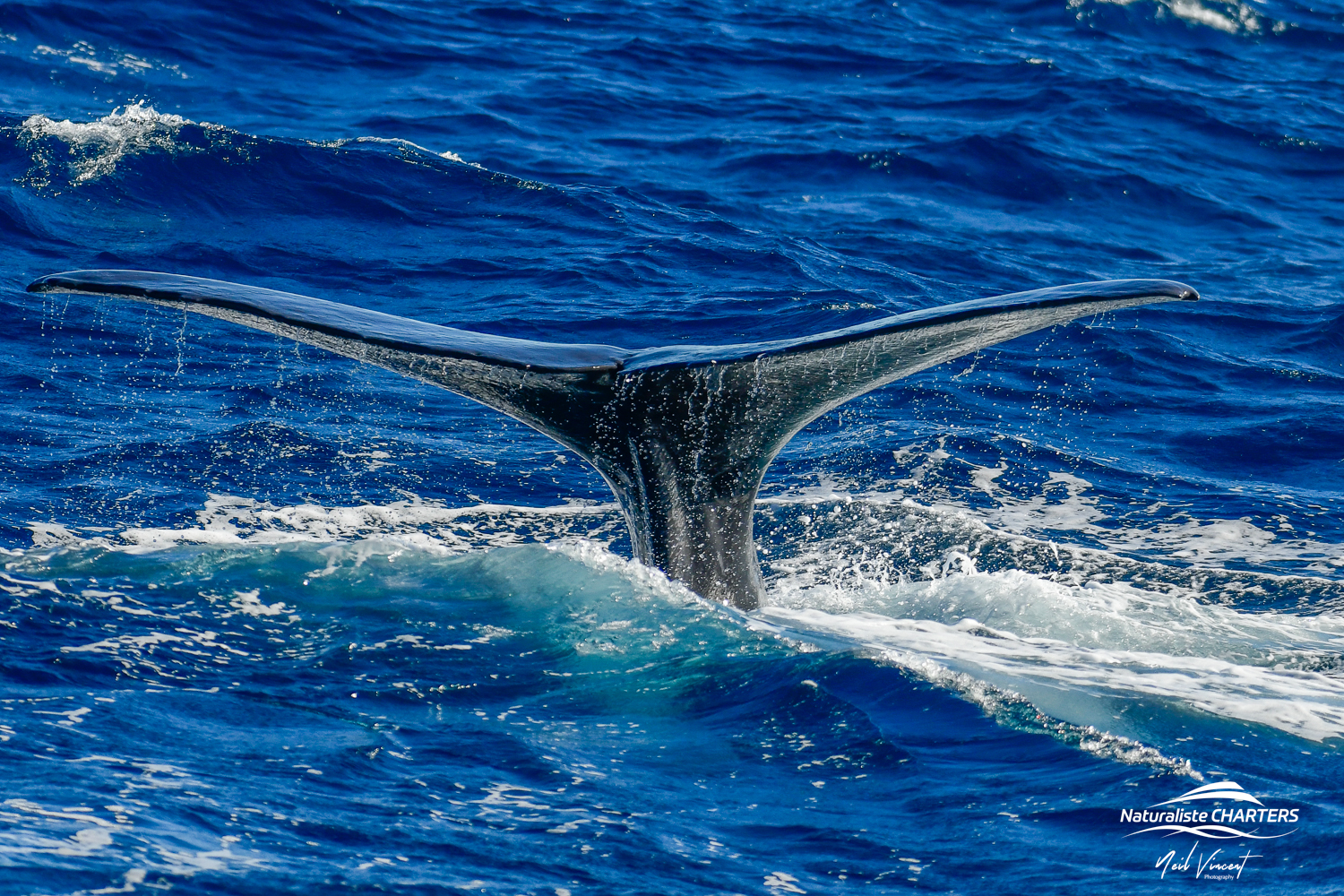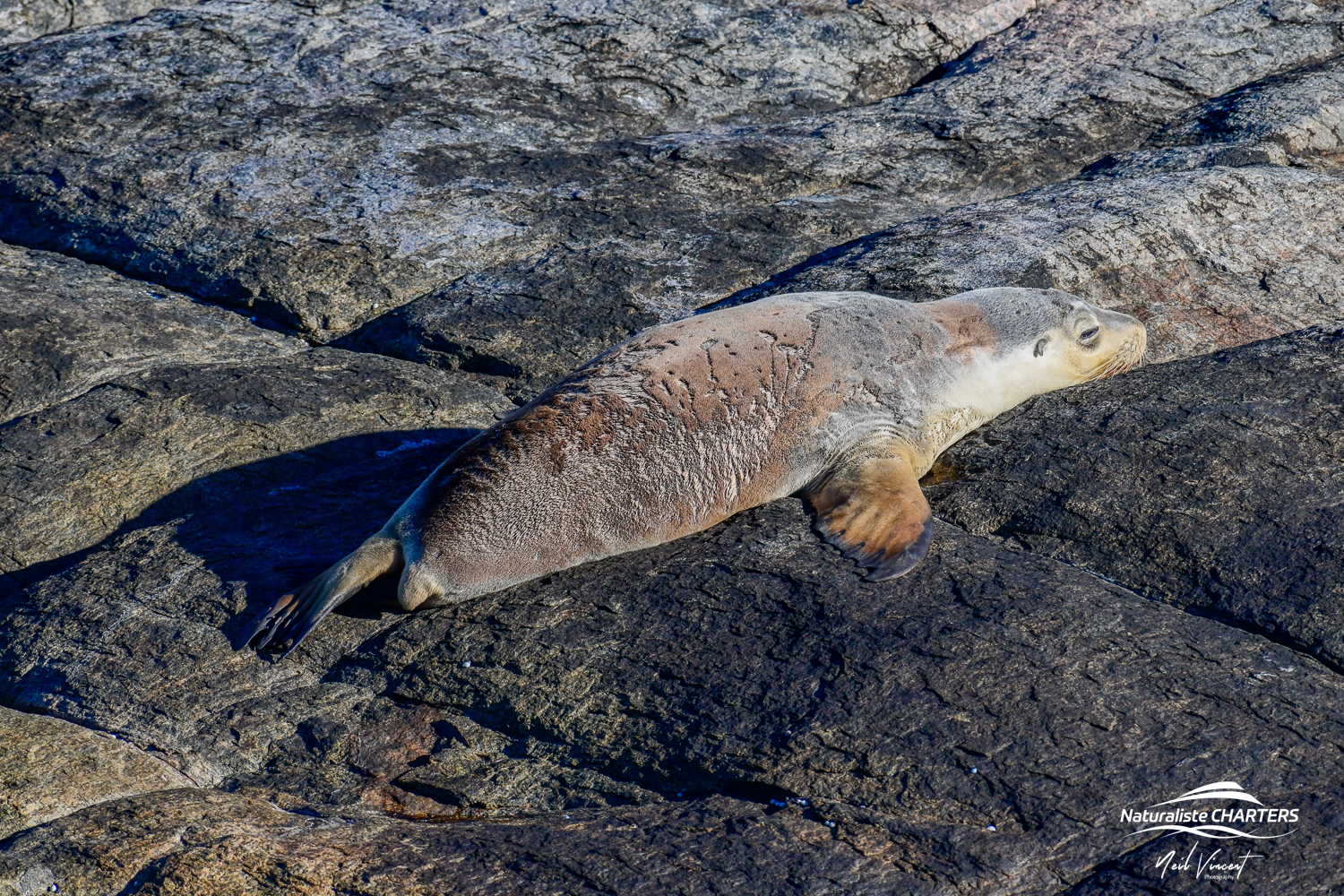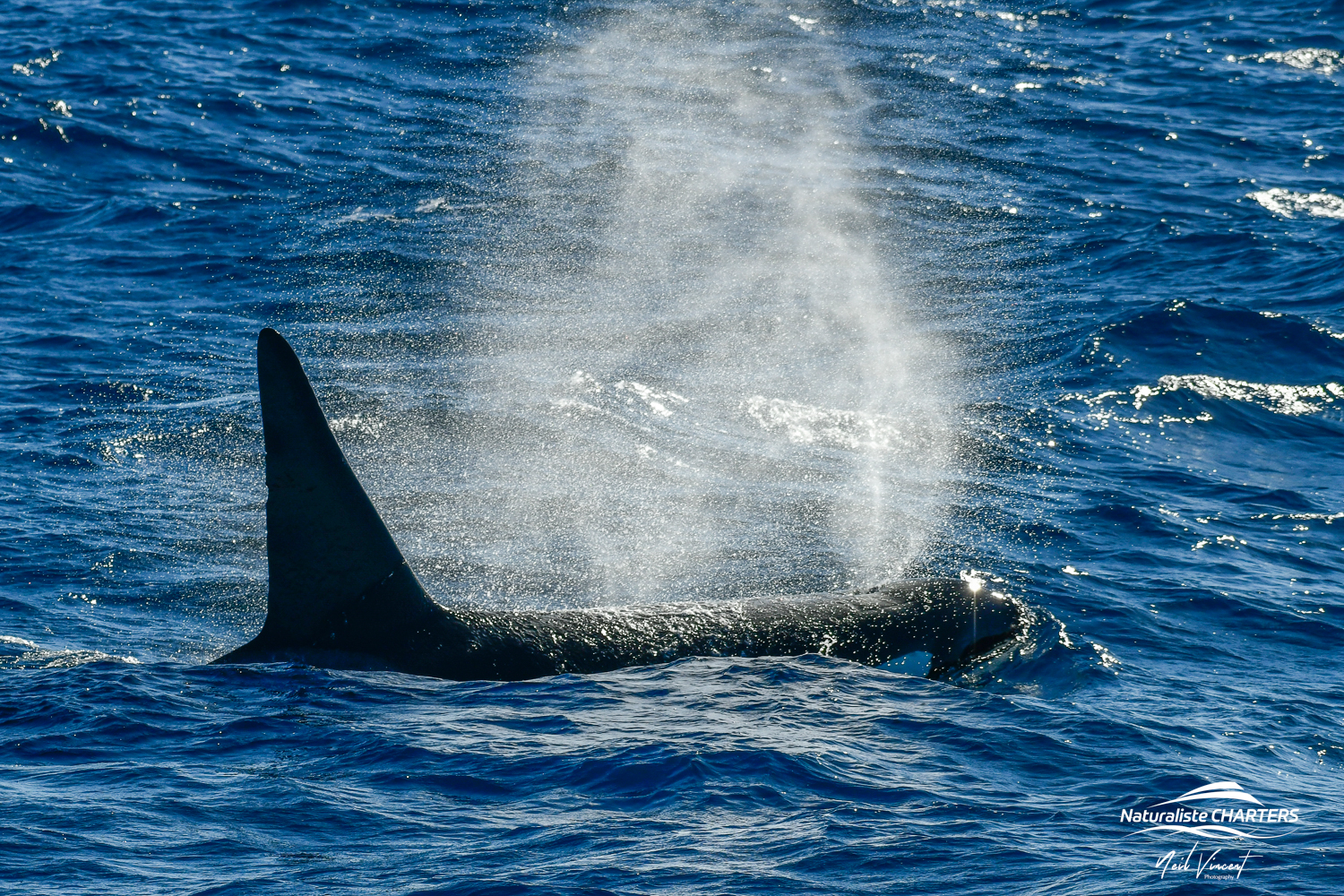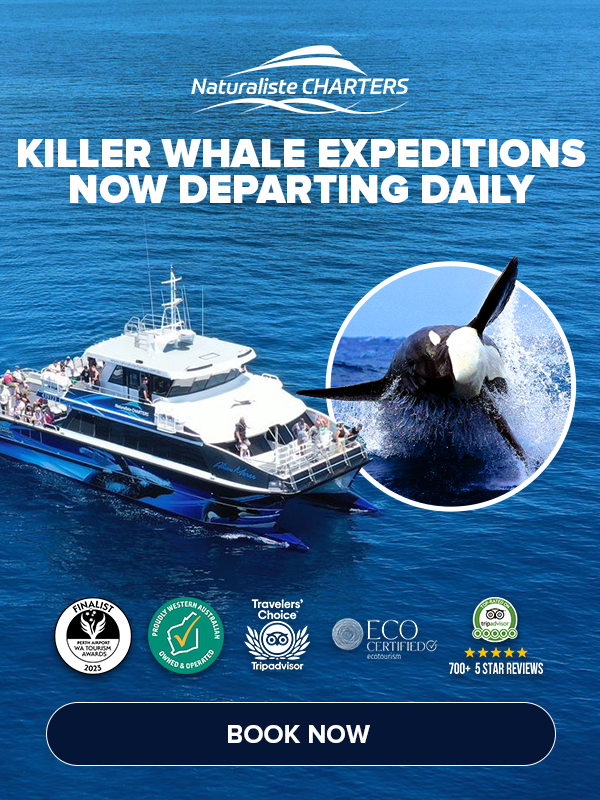This blog would like to recognise and acknowledge the Traditional custodians of the Whadjuk boodja (land) it was written on and their connection to land, sea and community. We would like to pay our respects to past, present and future Elders.
Breathing, technically called respiration, is the process where oxygen is taken in, aerobic metabolism occurs, and carbon dioxide is deposited as the byproduct. All mammals need to breathe air, including sea mammals like sperm whales, dolphins, blue whales, killer whales, and toothed whales.
Marine animals have a physical barrier to their breathing… water! The animals must position their bodies at the water’s surface to respire, meaning they are restricted to the top layers of water due to their own biology. They can descend into the depths with the process of breath-holding, known technically as apnea.
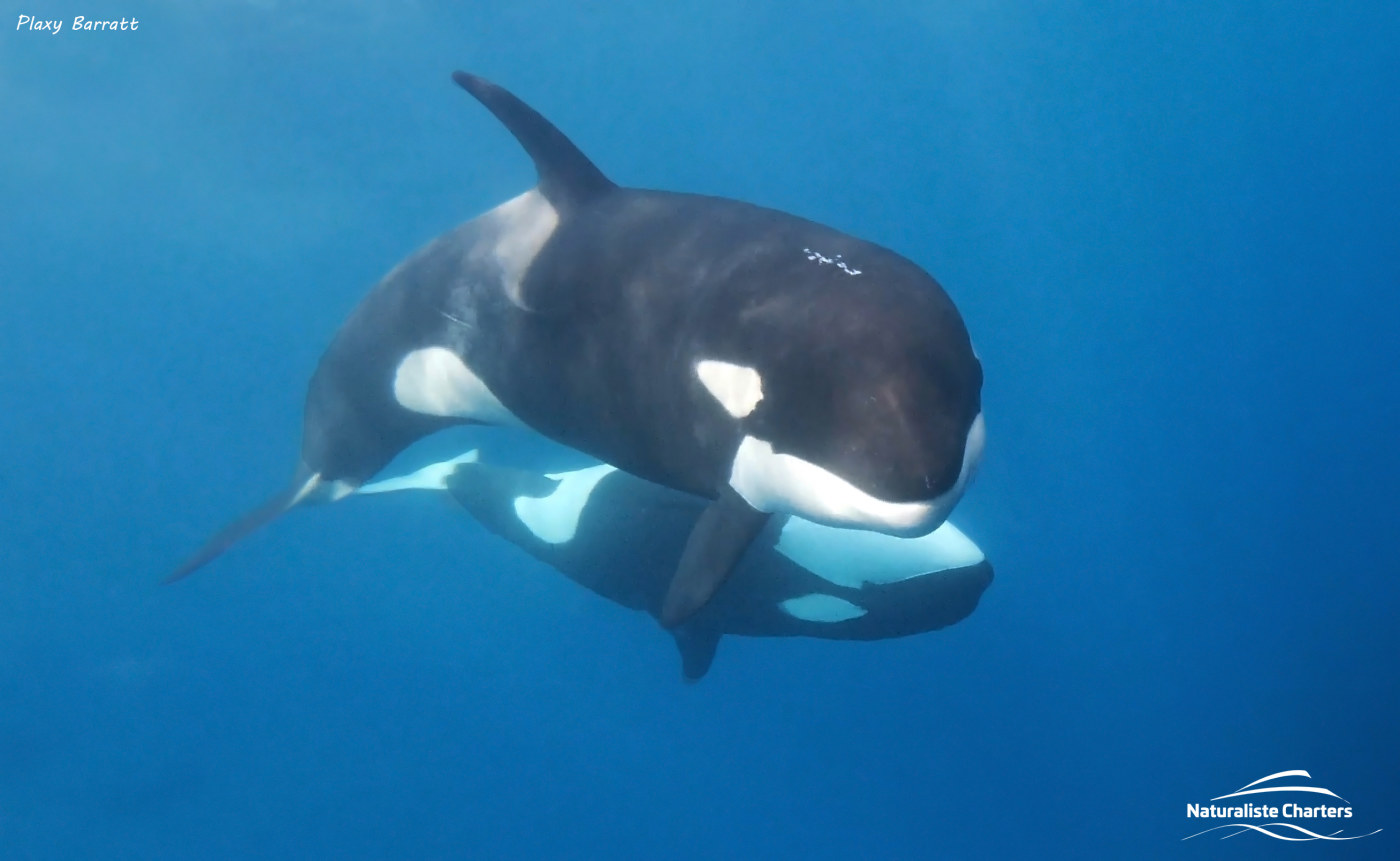
How do whales hold their breath for so long?
Marine mammals have adapted a feature not present in terrestrial species. This is the ability to control their breathing through their conscious brain. Not only can they control the timing of their breaths but also the amount of gas exchanged. It takes more brain power but is hugely advantageous to the animal. This does change their sleeping behaviour too, causing those marine dwelling such as whales to micro-sleep. Here only one half of the brain shuts down while the other half can consciously think about breathing! This allows whales to have long dives which would otherwise be impossible.
Cetaceans (whales, dolphins and porpoises) have blowholes which act as nostrils. The blowholes are naturally closed and need to be actively opened (muscles contracting) when taking a breath. This results in energy being saved as there isn’t the need to constantly “hold their nostrils shut” while submerged. If the whale was to have a lack of control at the blowholes it would regularly inhale water!!!
The longer a whale can be submerged the more it can get done in its day-to-day life. This includes foraging, or in other words, looking for food. To help with this, whales have greater oxygen stores than terrestrial mammals. However, differentiating diets and selective pressures, plus associated dive depths and times, have created large differences in the breath holds of whale species. This in turn results in differences in total body oxygen stores and its distributions across the lungs, muscles and blood.
Stay with me here as we get REALLY science-y to understand how whales can hold their breath for so long. Shallow divers, such as a Dugong, have small oxygen stores (21mL/kg), most whales such as humpback whales, will have intermediate stores (36-57mL/kg) and those deep diving specialists such as sperm whales, have much greater oxygen stores (67-97mL/kg). It is worth noting that the deepest diving animals, the beaked whales, have not been completely studied, meaning the oxygen storing potential could be a lot higher.
| Species | Total Oxygen (mL/kg) | Dive Depths (m) | Dive time (mins) |
|---|---|---|---|
| Bottlenose dolphin | 51 | <50 | <2 |
| Sperm whale | 81 | 400-900 | 40-60 |
Those that have much larger oxygen stores, actually store LESS in their lungs, instead of carrying it in their blood and muscles. Humans will hold their oxygen in their lungs which greatly reduces our capacity to dive deep!
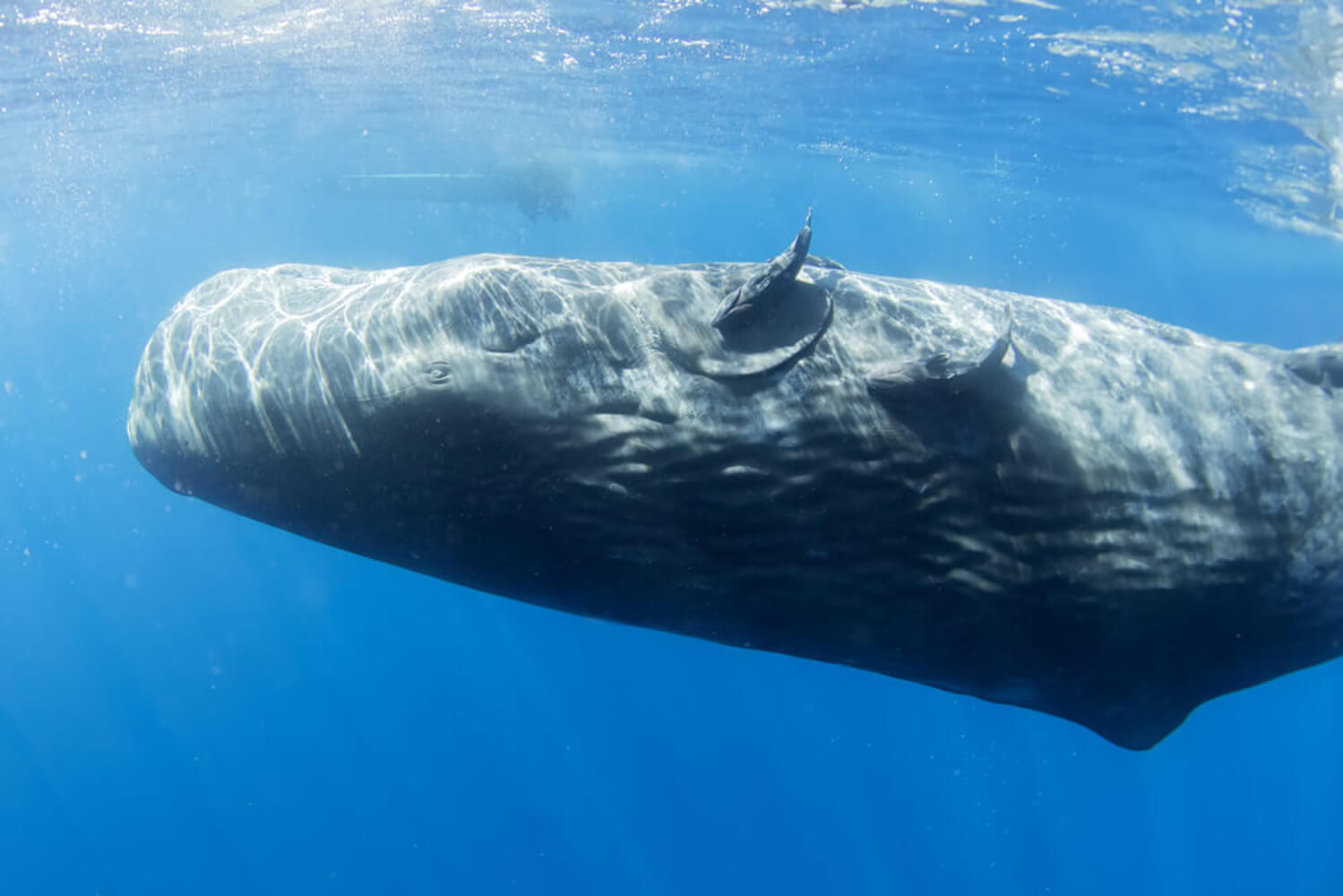
How long can each specie hold their breath?
There is a large variation in how long whales can hold their breath. Here is an example of some of the species we regularly interact with:
– Orca at 10 minutes (maximum 15 minutes),
– Blue whales can breath hold for 15 to 20 minutes (maximum 35 minutes),
– Humpback whales at 20 minutes (maximum 40 minutes),
– Southern right whales are similar at 15 to 20 minutes (longer maximum at 50 minutes)
When we watch whales in Dunsborough we observe these species in a fairly relaxed state as they are utilising the shallow waters of Geographe Bay to socialise and rest. They don’t tend to forage here which means they are regularly surfacing and we can see no more than 10 minute breath holds. Perfect for whale watching.
Records for holding breath
The longest breath hold as mentioned above is the Cuvier’s beaked whale. With 30 minute ‘bouncing’ breath holds between deeper 60 minute foraging dives, its limited surface time makes this species still poorly understood. Through tagging, this whale broke diving records with the deepest dive to 2992m and for 137.5 minutes. [2] In another later study a Cuvier’s was found to dive for 173 and 222 minutes [3] showing how long whales can hold their breath.
INTERESTING FACT:
One way that whales can make the most out of their breathing is by depleting the store so when they do breathe there is maximum uptake. This is considered optimal oxygen use and is used particularly for efficient foraging.
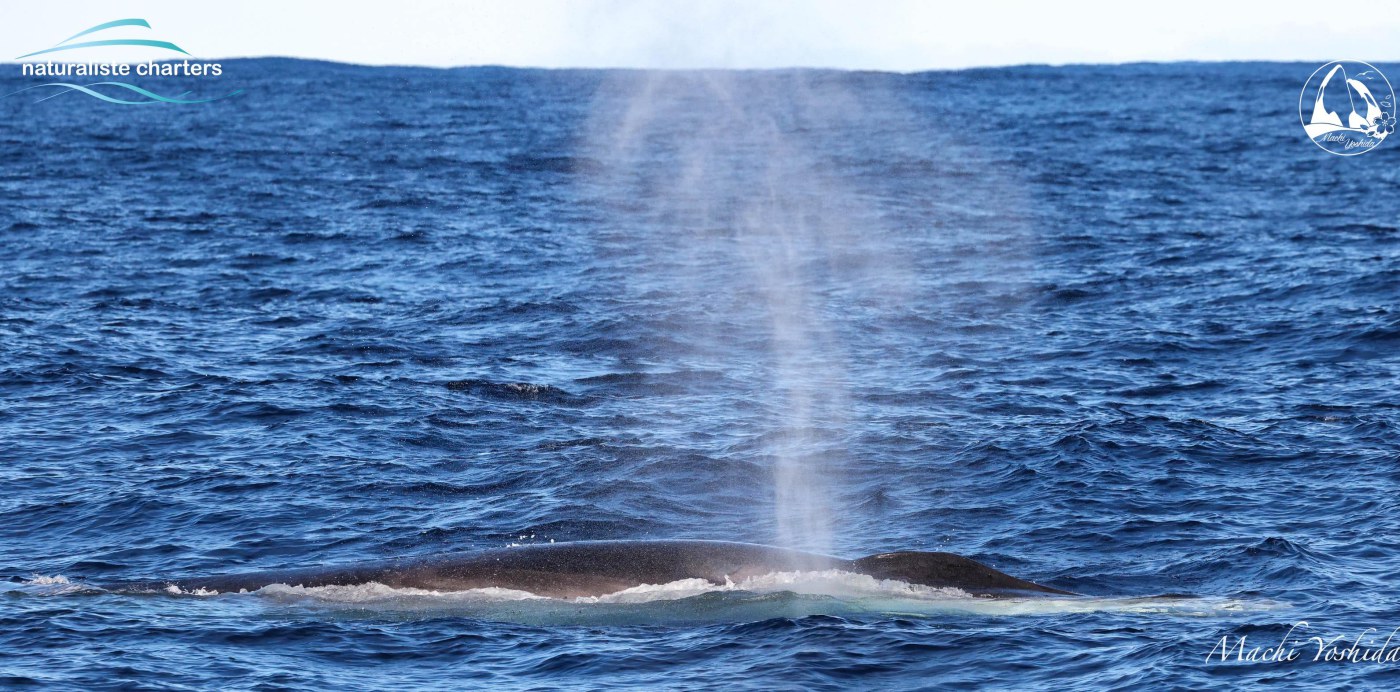
How many blowholes do whales have?
Mysticetes, baleen whales, have two blowholes whereas odontocetes, toothed whales, have only one. This hole goes to the trachea, then into the lungs. Blowholes are located at the top or dorsal region on the whales. This makes it A LOT easier for them to breathe at the surface as they don’t need to lift their head high out of the water. The blowholes are also protected in the front by a splash guard which helps keep out any seawater.
Whale calves take a while to get the hang of where their blowhole is, so they can be seen lifting more of their head plus some of their body out of the water.
When a whale gets to the surface they will exhale first sending a small amount of mist (whale snot) into the air. Sometimes, they are just below the surface which also shoots seawater high into the sky making the blow look big! This explosion of spray can be used to determine a whale’s species from a distance, as different species will have different height and shaped blows.
The process of respiration is extremely quick. Bottlenose dolphins can exhale and inhale in approximately one-third of a second!!!! Larger whales can take up to 2 seconds to complete a cycle. Gas can flow through the nostrils at up to 200m/s on exhalation and then at 44m/s on inhalation…
The conversion is 720km/hr exhalation…. This is twice as fast as a jet plane!
If you are looking for things to do in Dunsborough during the second half of the year (from September to November), then why not jump onto our vessel the Alison Mareee and experience these whales as they migrate along the Western Australian coastline. You can witness their long dives, enormous mouths, and how much air whales’ lungs can hold.
References:
[1] Encyclopaedia of Marine Mammals, 2018 Wursig et al.
[2] Handbook of whales dolphins and porpoises, 2020, M.Carwardine
[3] Extreme diving in mammals: first estimate of behavioural aerobic dive limits in Cuvier’s beaked whales, 2020, Quick et al.

